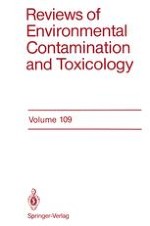Global attention in scientific, industrial, and governmental commumtles to traces of toxic chemicals in foodstuffs and in both abiotic and biotic environ ments has justified the present triumvirate of specialized publications III this field: comprehensive reviews, rapidly published progress reports, and archival documentations. These three publications are Illtegrated and scheduled to pro vide in international communication the coherency essential for nonduplicative and current progress in a field as dynamic and complex as environmental con tamination and toxicology. Until now there has been no journal or other publica tion series reserved exclusively for the diversified literature on "toxic" chemicals in our foods, our feeds, our geographical surroundings, our domestic animals, our wildlife, and ourselves. Around the world immense efforts and many talents have been mobilized to techmcal and other evaluations of natures, locales, magnitudes, fates, and toxicology of the persisting residues of these chemicals loosed upon the world. Among the sequelae of this broad new emphasis has been an inescapable need for an articulated set of authoritative publications where one could expect to find the latest important world literature produced by this emerging area of science together with documentation of pertinent ancil lary legislation.
